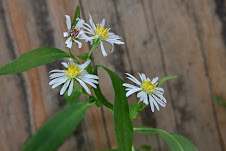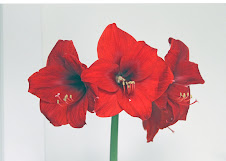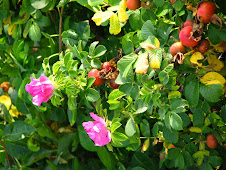April is the time of year when I can’t resist buying annual flowers to add color to my gardens and containers. I look for plants with many unopened blooms. Plants which have open blooms are often root bound and will grow slower. For a constant supply of cut flowers, I plant seeds at about 2 week intervals until mid July.
We probably all have areas of poor soil. This is the perfect place to plant the colorful nasturtiums. Wait for warm soil before seeding. Blooms should appear within 50 days. Too much water and fertilizer sends energy to the leaves not the flowers.
April is a good time to divide chrysanthemums. Pinch off the tops down to 6 inches. Pinch every month to keep the plants at this height until late July. Feed monthly with liquid fertilizer such as fish emulsion until the buds show color.
Tulip leaves which have yellowed halfway down can be removed. Fertilize them at the same time. Dead head spring bulbs leaving the flower stem intact. After daffodils flowers, which have been decorating and scenting my rooms die, I don’t throw them away. Instead I scatter the flowers over my tulips and other deer loving plants. The deer bite into the daffodil stem by mistake and will leave the plant alone. Dead daffodils are a cheap and easy deer deterrent.
Finally I discovered a use for plastic packing peanuts. I use the plastic, not biodegradable peanuts, as a substitute for the gravel or stones I place in the bottom of my flower pots. A piece of pantyhose in the bottom will keep soil from dripping out.
Lilacs should be feed with manure and lime. Last azalea feeding should be after blooming. Crepe myrtles should be feed this month and July with a high phosphorus fertilizer. Fertilize tea roses once a month. Small, sparse and pale dogwood leaves are probably begging for fertilizer. Have the soil under the tree tested.
Some herbs that thrive in the sandy soil of sunny rock gardens and brick walkways are creeping thyme, sage, santolina, lavender and garlic.
The mustard greens are blooming; regrettably, I haven’t had time to harvest them. The leaves, buds and flowers are edible. This time of the year I see them for sale in health food stores. Other edible weeds are pigweed, purslane, chickweed, lamb’s quarters and dandelion greens. In my vegetable garden I’m planting Swiss chard, spinach and lettuce.
Many insects are your garden’s best friend. Bees pollinate; wasps destroy whiteflies and aphids; yellow jackets feed on flies and caterpillars; lady bugs eat aphids, mealy bugs, and spider mites. Other beneficial insects are dragonflies, lacewings, beetles, spiders, and beneficial mites. So avoid toxic sprays and dusts which kill beneficial insects, frogs and lizards.
Subscribe to:
Post Comments (Atom)



















LP_gardening_2666.jpg)
LP_gardening_2668.jpg)

LP_garden_2819.jpg)

LP_flower_0563.jpg)
LP_flower_0577.jpg)
LP_flower_0545.jpg)
LP_flower_0555.jpg)
LP_flower_0539.jpg)
LP_dog_0470.jpg)
LP_snow_0467.jpg)
LP_dog_0349.jpg)
LP_tree_8153.jpg)
LP_5028.jpg)
LP_flowers_3940.jpg)

LP-grass_0889.jpg)
LP_redfox_1651.jpg)
LP_squirrel_6978.jpg)
LP_flower_6936.jpg)
LP_squirrel_6864.jpg)
LP-deer_4773.jpg)
LP_4521.jpg)
LP_1251.jpg)
LP_4585.jpg)
LP_3784.jpg)
LP_3759.jpg)
LP_3811.jpg)
LP_3816.jpg)
LP_3847.jpg)
LP_0870.jpg)
LP_4183.jpg)
LP_0891.jpg)
LP_3175.jpg)
LP_3577.jpg)

LP_3068.jpg)
LP_3058.jpg)
LP_3562.jpg)
LP_0118.jpg)
LP_3407.jpg)
LP_3150.jpg)
LP_3011+(2).jpg)
LP_3020.jpg)
LP_2830.jpg)
LP_2782.jpg)
LP_2828.jpg)
LP_1746.jpg)
LP_2648.jpg)
LP_2666.jpg)
LP_2668.jpg)
LP_2493.jpg)
LP_2611crop.jpg)


LP_2588.jpg)






LP_2126.jpg)
LP_2122.jpg)






No comments:
Post a Comment